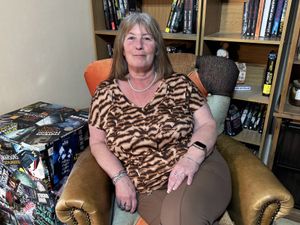Now press play: How crisis turned us towards our screens
Television has never been so popular. TV addicts spent almost half of their waking day tuning into television and online streaming services at the height of lockdown.

Steaming became increasingly popular as a staggering 12 million adults signed up to new services, including three million who’d never previously taken out an account.
New figures show that in April, people spent an average of 45 hours per week glued to the box – longer than they would have spent at work.
That was a rise of almost a third compared with figures in 2019, as people had more time on their hands as the nation went into lockdown, workers were furloughed and kids were sent home from schools.
Among the biggest winners were Netflix, Amazon Prime Video and Disney+, which showed impeccable timing by launching on the first day of the UK’s lockdown.
All have benefited from having a captive audience as older viewers who’d previously shied away from streaming have decided to tune in.
Before the Covid-19 crisis, just 25 per cent of Britons aged 55 to 64 tuned into streaming services while only 12 percent of pensioners did. Those figures quickly shot up to 32 per cent and 15 per cent respectively as surfing greys decided to get to grips with newer technology.
Disney+ became the UK’s third most popular streaming services overnight by attracting 16 per cent of online adults, placing it behind Amazon Prime Video, on 39 per cent, and Netflix, on 45 per cent.

Disney+, however, was even more popular among families with children aged 3 to 11, with a whopping 32 per cent tuning it, making it more popular than the BBC’s iPlayer.
Public service broadcasters, including the BBC, ITV, STV, Channel 4 and Channel 5, enjoyed success with their own ondemand services with the BBC iPlayer notching up a record 570 million programme requests in May 2020 – a remarkable increase of 72 per cent on May 2019. Channel 4’s on-demand service also generated extra viewers while ITV Hub enjoyed record figures.
“It’s true that it has been almost perfect conditions for all the major streaming services,” said Richard Broughton, an analyst at Ampere.
“Under lockdown there has been a lack of alternative entertainment options where you couldn’t see friends and cinemas, restaurants, pubs and clubs were closed. And with traditional TV there has been a relatively limited variety of shows, people were rapidly running out of things to watch.
“The pandemic showed public service broadcasting at its best, delivering trusted news and UK content that viewers really value,” said Yih-Choung Teh, the strategy and research group director at Ofcom. “But UK broadcasters face a tough advertising market, production challenges and financial uncertainty. So they need to keep demonstrating that value in the face of intense competition from streaming services.”
The increase in streaming, however, didn’t necessarily lead to a big surge in profits. Advertising is in retreat as businesses par back their budgets.
BBC Media Editor Amol Rajan explained: “In the age of information overload, our attention is the most precious resource.
“These days we devote ever more of it to screens. And that was before lockdown. The surge in screen viewing through the pandemic is genuinely extraordinary. It’s important to remember that many of the companies or services that have turned us into screen addicts didn’t exist a decade ago.
“Sadly for Britain’s commercial broadcasters, all these eyeballs haven’t turned into revenue, as advertising is in sharp retreat, for now at least.”

Apple has moved into the digital space by offering its own TV service and it has quickly captured seven per cent of the streaming market.
Apple are offering free six-month subscriptions with new devices and so that may distort the figures.
The company only has 78 hours of content compared to 57,000 offered by Amazon Prime Video and 36,000 offered by Netflix.
Now TV, BritBox and Disney+ have 13,600, 4,900 and 3,400 hours respectively.
As would be expected by the nature of the channel, Disney+ broadcasts more children’s content than other streaming services (69 per cent compared to nearest rival Amazon Prime Video with 18 per cent).
Now TV provides more factual content (20 per cent) than others, while Netflix is the leader for drama with 62 per cent of their content falling into this category.
Despite the surge in streaming, the most popular TV shows of lockdown have been predictable – with Prime Minister Boris Johnson and the Queen occupying the top slots.
Johnson’s announcement on May 10 that lockdown measures would be eased was the most watched programme of the year so far, with 18.7 million viewers, while the imposition of lockdown on March 23 was second with 14.6 million.
Queen Elizabeth’s broadcast to the nation was third with 14 million. Our new love affair with TV has not been without some problems, however.
The Bandwidth Britain Report from Uswitch has found the streaming services which use the most bandwidth are also causing the biggest disruption to our lockdown box set binges.

The research team took the most popular streaming services in the UK and revealed the ones that are the most unreliable.
It’s calculated by the number of times that people have gone to Google to complain about them: “Netflix not working”, “Now TV not working”.
Netflix unsurprisingly topped the list as the UK’s most complained about streaming app during lockdown.
It had a complaint score of 8,300 but Netflix is the most popular streaming app so it follows it will generate the most complaints.
Interestingly, the appetite of younger viewers is much stronger than that of older viewers. Those aged 16-24 are able to spend more time tuning in.
Figures show that 16 to 24-year olds are watching 4 episodes of a series at a time on average, and would consider 5 a binge.
The 55+ age range are only managing 1 episode at a time on average, and would consider 3 back to back as bingeworthy.
Tastes vary in different parts of the UK, too.
In Birmingham, Nottingham and Newcastle, people like to binge on Peaky Blinders but in Brighton, Bristol, Manchester and Liverpool they prefer Line Of Duty.
Game Of Thrones is a favourite in Edinburgh and Cardiff but Killing Eve is number one in Southampton.





